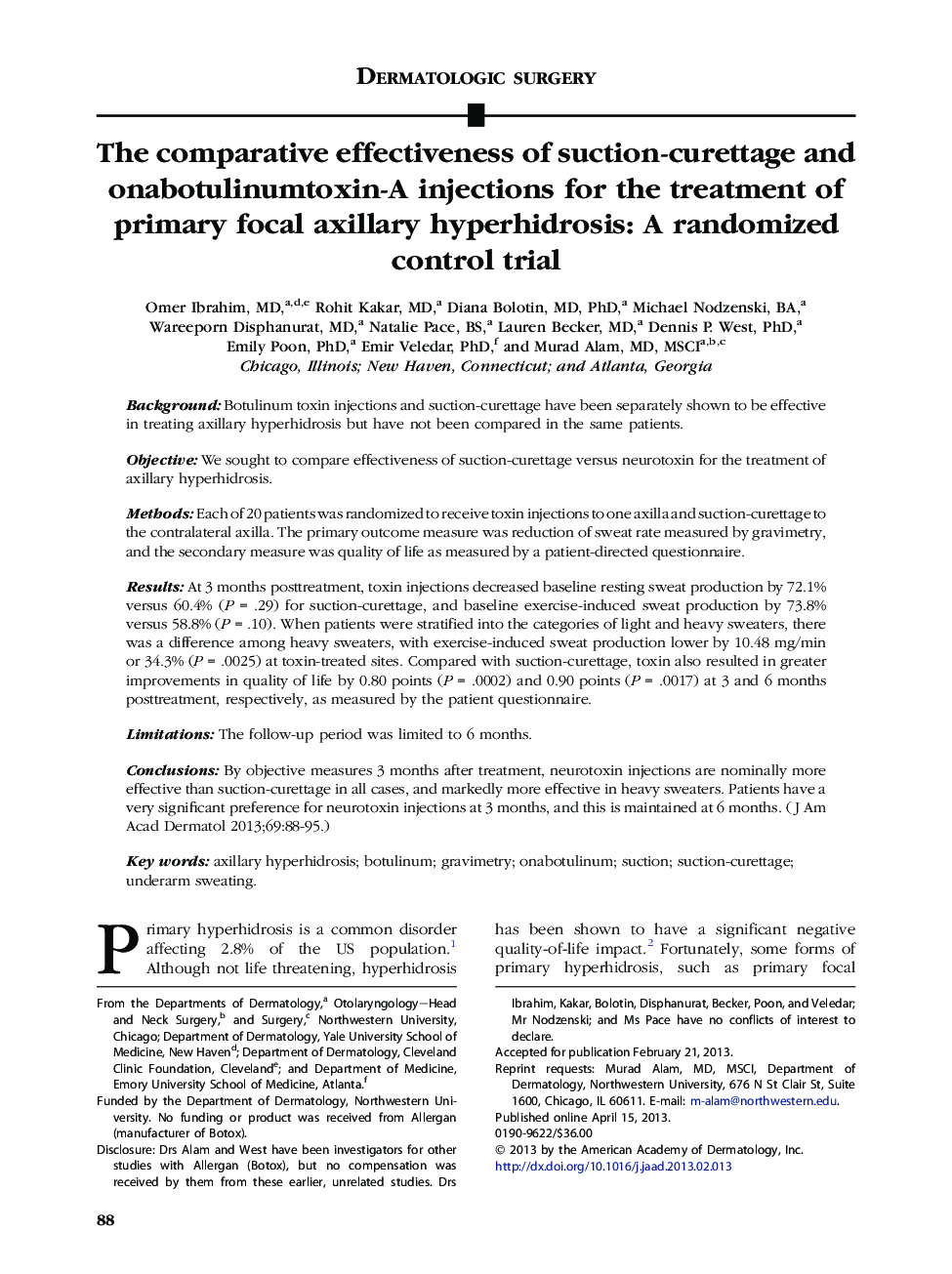| Article ID | Journal | Published Year | Pages | File Type |
|---|---|---|---|---|
| 3206033 | Journal of the American Academy of Dermatology | 2013 | 8 Pages |
BackgroundBotulinum toxin injections and suction-curettage have been separately shown to be effective in treating axillary hyperhidrosis but have not been compared in the same patients.ObjectiveWe sought to compare effectiveness of suction-curettage versus neurotoxin for the treatment of axillary hyperhidrosis.MethodsEach of 20 patients was randomized to receive toxin injections to one axilla and suction-curettage to the contralateral axilla. The primary outcome measure was reduction of sweat rate measured by gravimetry, and the secondary measure was quality of life as measured by a patient-directed questionnaire.ResultsAt 3 months posttreatment, toxin injections decreased baseline resting sweat production by 72.1% versus 60.4% (P = .29) for suction-curettage, and baseline exercise-induced sweat production by 73.8% versus 58.8% (P = .10). When patients were stratified into the categories of light and heavy sweaters, there was a difference among heavy sweaters, with exercise-induced sweat production lower by 10.48 mg/min or 34.3% (P = .0025) at toxin-treated sites. Compared with suction-curettage, toxin also resulted in greater improvements in quality of life by 0.80 points (P = .0002) and 0.90 points (P = .0017) at 3 and 6 months posttreatment, respectively, as measured by the patient questionnaire.LimitationsThe follow-up period was limited to 6 months.ConclusionsBy objective measures 3 months after treatment, neurotoxin injections are nominally more effective than suction-curettage in all cases, and markedly more effective in heavy sweaters. Patients have a very significant preference for neurotoxin injections at 3 months, and this is maintained at 6 months.
